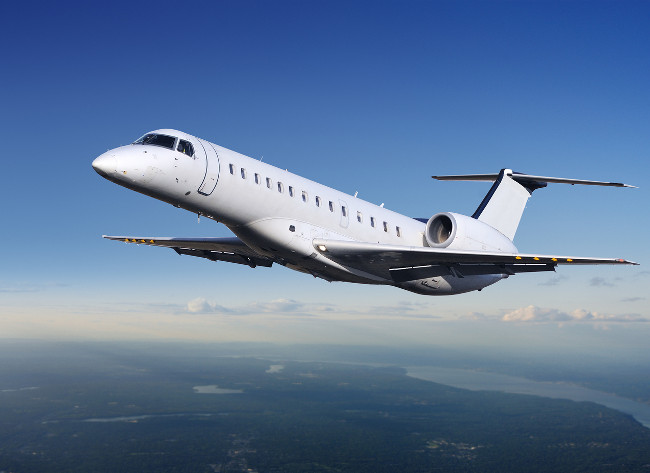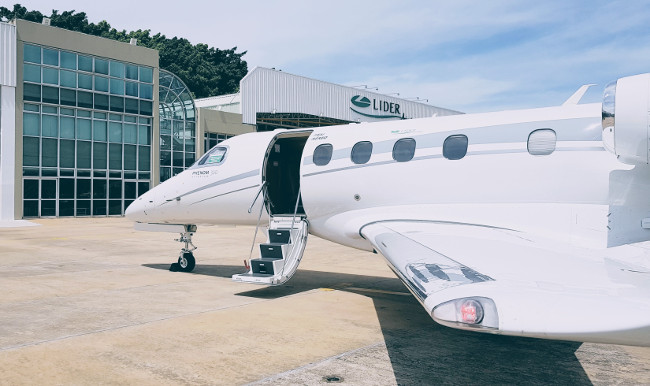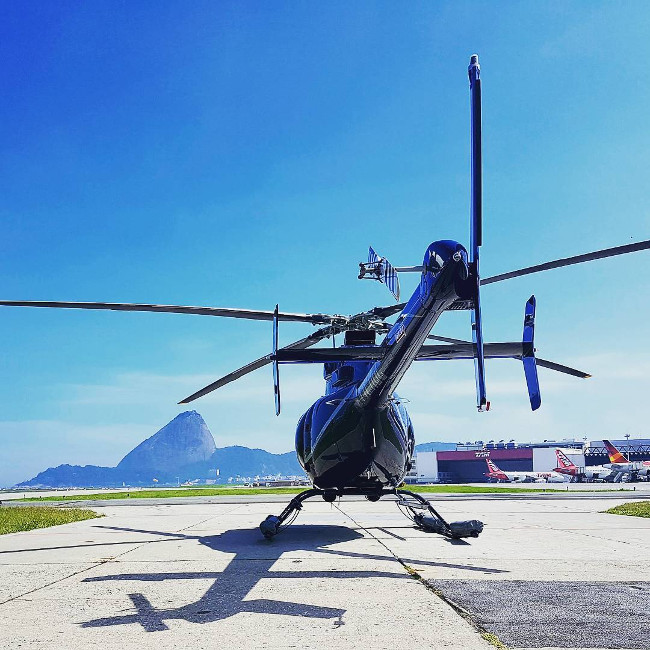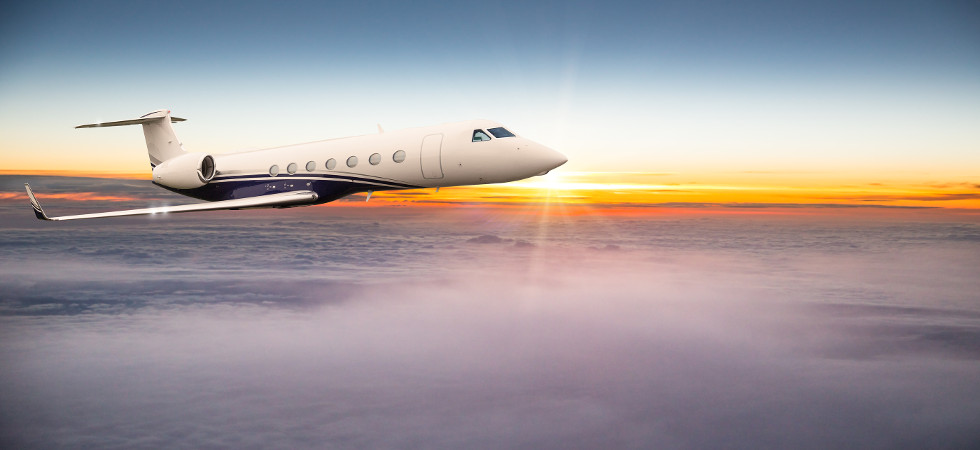Words by Paul Malicki, Flapper CEO.
Las Vegas-to-Los Angeles or Moscow-to-Niece: as a private aviation enthusiast you’ve probably heard that these are some of the world’s most frequently flown executive aviation routes. With a fleet of 23,500 business jets, the United States alone boasts 10 different private aviation routes with 1,000+ yearly operations. This includes popular business airport pairs, such as Dallas-to-Houston, as well as leisure-focused Teterboro-to-Miami. All-in-all, FAA data for 2019 point to more than 5,000 airports serving executive aviation in the US, compared to just over 500 for commercial aviation. Up to 80% of all private jet flights are directed toward small cities, with 41% of those without access to commercial aviation.
Nearly 5,000 miles to the east, in Europe, the business aviation sector displays a more granular distribution of business jet traffic. “We see a tendency, where the top 10 airports drop their share in European business aviation traffic and the secondary airports emerge as strong contestants,” said one of the panelists of the annual EBACE conference in Geneva, Switzerland in May 2019. Limited infrastructure at commercial airports, combined with growing commercial passenger traffic, push private aviation activity to smaller airports, hence stimulating new routes within the executive aviation landscape. London alone can currently be accessed by as many as seven airports, with the total number of business aviation operations at its top four runways accounting for almost 84,000 annual movements. Luton Airport and Farnborough lead the rankings, while the ambitious project of Biggin Hill Airport reported 18% YoY growth in 2018.

Now, have you ever wondered how the South American business aviation market compares with its US and European equivalents? Separated by the 20,000 feet tall Andes, South American countries nurture what we can best consider domestic business aviation activity. Nearly 99% of all flights in Brazil are local and its market registers more general aviation operations than all the other South American territories combined.
Brazil in a nutshell
Brazil boasts the second largest number of active private aircraft in the world. With nearly 2,000 executive jets and turboprops, the general aviation sector reached 1225 municipalities in 2018 versus roughly 105 in commercial aviation. The market accounts for a whopping 583,000 general aviation operations a year (ABAG 2018). Compare this with just over 130,000 annual flights in France or 676,000 flights (EBAA 2018) in the whole of Europe and you can begin to imagine where am I coming from. The market is composed of 110 active Part 135 operators, responsible for 22% of all flights in Brazil.
In essence, Brazil is a strong player within the global private aviation landscape. It has successfully developed an efficient local ecosystem, with executive charters, aeromedical flights, and specialized services co-existing within one Part 135 framework. Up to 88% of all flights take place within a radius of 350 miles (1,000 km) from São Paulo, which prompts the use of turboprops over other types of executive aircraft.

Located strategically in the country’s Southeast region, my on-demand charter company Flapper has been collecting data about the market ever since and we are proud to present you with the list of the most frequently flown general aviation routes in Brazil. The statistics incorporate all private aviation operations, including piston aircraft, medical services, and aircraft repositioning – and they shed light on the overall type of business aviation activity in the region. Some of the most frequent routes include São Paulo (SBSP) – Belo Horizonte (SBBH), São Paulo – Rio de Janeiro (SBRJ) and São Paulo – (Brasília) (SBBR). The private aircraft used to typically operate these routes are turboprops King Air B200 and light jets, including the locally made Embraer Phenom 300.
Brazil’s top private charter routes
Did you just see that private jet taking off from São Paulo Congonhas Airport? There is a good chance that it might be heading to Rio de Janeiro or Belo Horizonte, the country’s #2 and #3 business destinations. Here are some of the top business aviation routes in Brazil:
São Paulo SBSP – Belo Horizonte SBBH
Key explanation: a popular business route. In recent years, Belo Horizonte has emerged as the second largest congregation of premium customers in Brazil, just after the incumbent leader, São Paulo. On one hand, the strategic role of Rio de Janeiro has diminished due to political crisis and the indebtedness of the state. And on the other hand, the favorable government policies of Minas Gerais state (Belo Horizonte is the state’s capital) and solid stock exchange performance of the MG-based companies helped boost the crucial role of Belo Horizonte in shaping economic development in Brazil. Belo Horizonte is home to numerous corporate business aviation users, including MRV, Localiza, and Belvitur.

There are at least two more reasons for the heavy business aviation activity on the above route. First is the presence of one of the largest local operators, Lider Aviação. Its operations require frequent aircraft repositioning, what adds to the existing general aviation footprint. Second comes the deprivileged location of the commercial CNF airport – it takes up to 1.5h to reach the airport by car and there is no fast-transit infrastructure between the airport and the city of Belo Horizonte.
São Paulo SBSP – Rio de Janeiro SBRJ
Before the economic crisis in 2012-2016, the route used to be the world’s most frequently flown in commercial aviation, with up to 300 daily flights (120 on average)! It remains an important pair of cities for both tourism and business exchange. Multiple investment funds and state-owned companies based in Rio de Janeiro spend their resources in São Paulo, itself considered the engine of the economic growth in Brazil. Tourism-wise, Rio de Janeiro continues to be the most popular destination in Brazil and the weekend escapades to Ipanema Beach are not uncommon among the Paulistas (as the local São Paulo residents are called).

It’s worth mentioning that Rio de Janeiro is Brazil’s main hub for offshore flights. The executive airport of Jacarepaguá hosts a fleet of 30+ helicopters, including Agusta 139, Sikorsky S76, and Sikorsky S92, among others. Santos Dumont Airport, on the other hand, serves corporate travelers. Located centrally in downtown Rio de Janeiro, the airport is a popular hub for visits to Rio de Janeiro-based state-owned companies, such as Vale or Petrobras, or multiple legal offices located in the city center.
Brasília SBBR – Goiânia SBGO
The cities, located some 200km (124 miles) away from each other, are economically and politically interdependent, hence stimulating regional business aviation activity. Interestingly enough, as of today, Brasília airport hosts only one Part 135- certified airplane, which outlines a rather murky picture of the local business aviation footprint. The city’s local executive aviation segment suffered a dramatic drop in the aftermath of the Lava Jato operation, as well as due to clandestine flights, resulting in a drastic reduction of the commercial charter fleet. This adds up to extra flights to the above route, due to repositioning from nearby Goiânia, itself equipped with a 15-strong fleet of turboprops and jets, including Learjet 31A, Learjet 35A, Legacy 600, King Air B200, King Air C90, and numerous Cheyenne and MU-2 models.
São Paulo SBSP – Brasília SBBR
Brazil’s capital city Brasília attracts high-level politicians, dignitaries, and businesspeople alike. Brazilian senators tend to fly to Brasília on Tuesdays and return on Thursdays. Boosted by travel allowances and privacy concerns, politics-related transportation is responsible for at least 50% of the traffic on the above route. The rest is complemented by business activity, including lobbying and strategic meetings between Brazil’s largest corporations.

The Complete List
Below you will find the complete list of the top business aviation routes in Brazil, together with the distance and key facts about the runways. Don’t forget that Brazil is also a huge market for helicopter flights, with São Paulo being the #1 city globally in terms of both the fleet and the existing heliport infrastructure. The business triangle of São Paulo – Rio de Janeiro – Belo Horizonte makes my weekly routine as a jet setter. If you ever come around, please do not hesitate to get in touch.
Top General Aviation Routes

About Flapper
Founded in 2016, Flapper is the first on-demand executive aviation company in Brazil, with shared flight and air charter services. The company operates crowdsourced flights in the Southeast region, with an additional 10 high-season destinations across the country. It boasts more than 200 certified charter aircraft on its platform and has more than 100,000 registered users in its system.






















